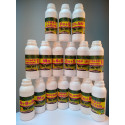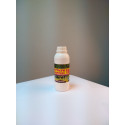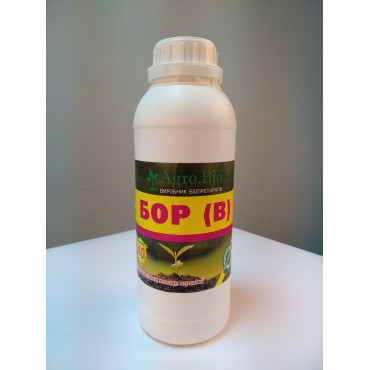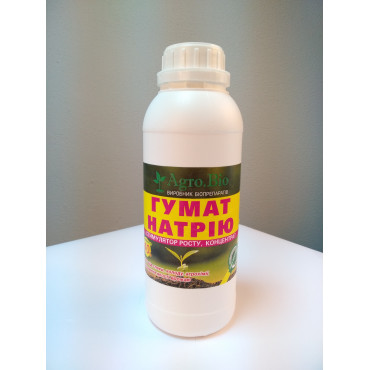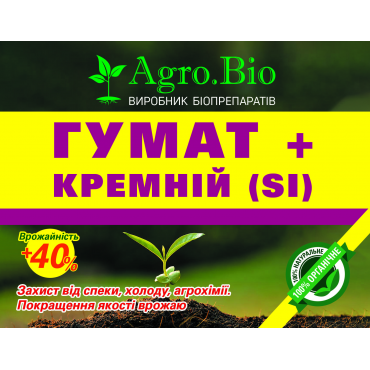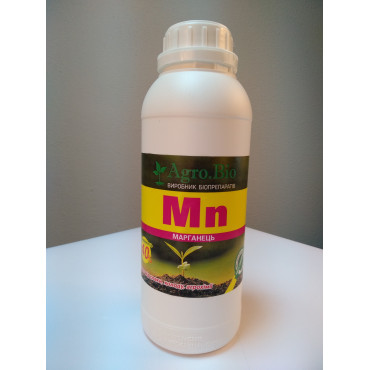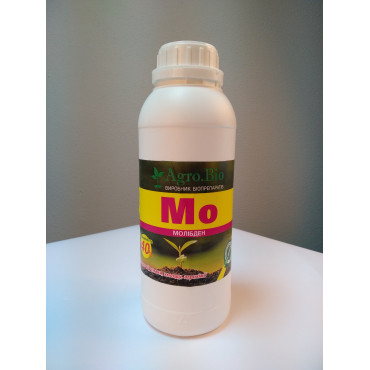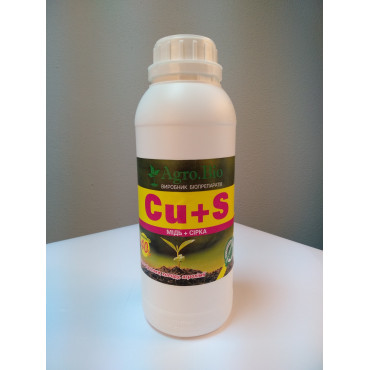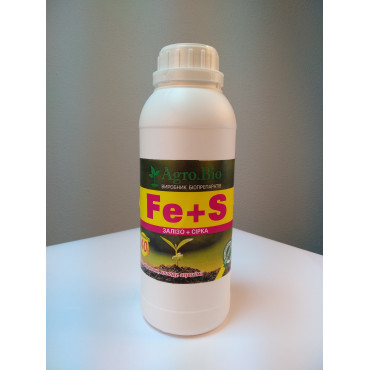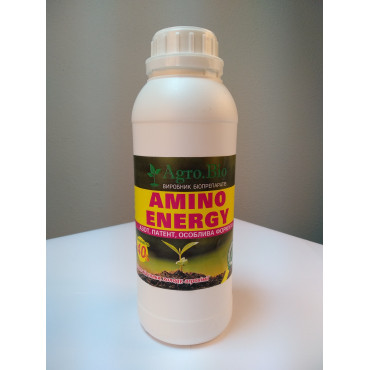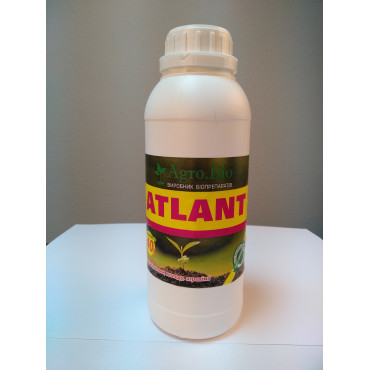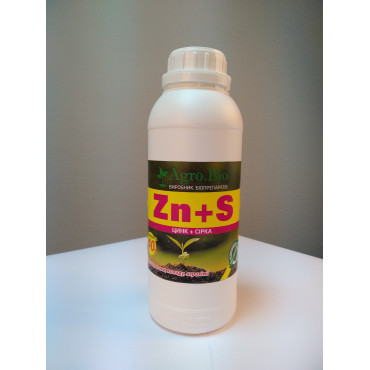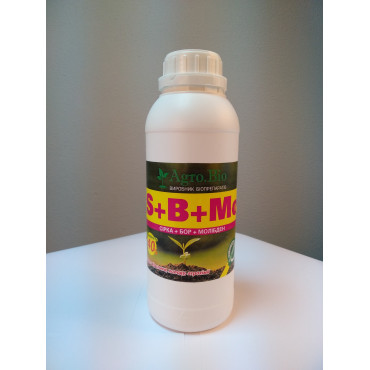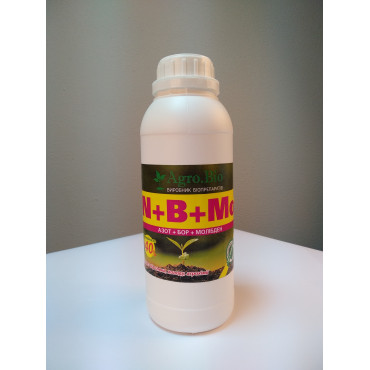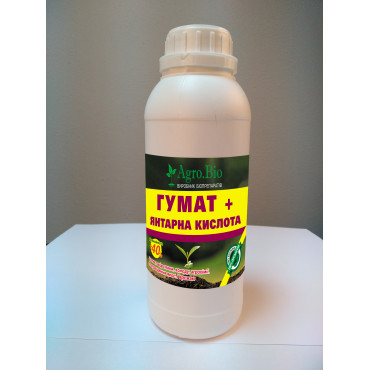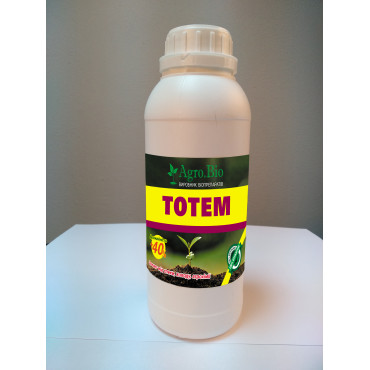Advantages of ecologically safe fertilizer Multicomplex 10 before other preparations
- the primary product of fertilizer is on the basis of potassic humate made from leonardite (humic, fulvic acids with 10 major- and minor nutrient elements);
- ballast salts (chlorides) are absent;
- the fertilizer elements have a chelate form;
- the use of multicomponent fertilizers is economically profitable (due to the comprehensive effect of elements: phosphorus, potassium, magnesium, sulfur, manganese, boron, zinc, copper, molybdenum, cobalt);
- 100 microns fertilizer particles do not clog the nozzles and cause corrosive influence (when used with spraying system and liquid supplying pumps);
- improves the efficiency of mineral fertilizers and pesticides;
- fertilizer elements contain water-soluble, liquid, concentrated and 100% available nutrients (humic acids and substances with growth promoters).
- crop progress increases by 15 - 25% and vegetable productivity – up to 40%;
- accelerates the germination ability, the germinative power of seeds, rooting of plants sprouts and seedlings;
- accelerates the growth and development of plants, prolongs fruiting season, reduces afterripening periods;
- it is absorbed even at low temperatures of the soil environment;
- increases the content of vitamins, sugars in plants, in cereals – the percentage of gluten, in oil-plant – oil substances;
- stimulates the activity of the microbiological complex, leading to the enrichment of the soil by the available nutrition elements;
- reduces the content of harmful substances (nitrates) in plant organs;
- increases plant resistance to unfavorable environmental factors;
- significantly reduces the entry of heavy metals and radionuclides into agricultural crops;
- forms resistance of plants to diseases (fungal, viral, bacterial);
- increases frost resistance;
- increases the agricultural productivity.
Multicomplex humate 10 produced by AGRO.BIO of natural origin in modern conditions is the most effective and economically profitable preparation, made of leondardite on the basis of humic and fulvic acids with a composition of properly selected major- and minor nutrient elements (phosphorus, potassium, magnesium, sulfur, manganese, boron, zinc, copper, molybdenum, cobalt) in chelate form.
Potassium (K2O - 38.9 g/l)
- improves soil fertility;
- actively contributes to the processes of photosynthesis;
- stimulates the turgor processes in the cell (promotes the best flow of substances to the plants organs);
- regulates the osmotic pressure (permeability, water regulation), the processes of respiration (improves the work of respiratory circuit), the synthesis of carbohydrates;
- activates the work of enzymes;
- promotes growth and development of the roots, increases tillering, fruit size, provides the cereal crops resistance to lodging, promotes cell wall thickening, improves the taste of fruits, increases shelf life;
- increases the content of sugars, carbohydrates (starch), vitamins (ascorbic acid);
- increases sugar degree of the root crops, accumulation of fats in croppers' seeds, starch content in potato tubers;
- increases crop progress, frost, winter resistance, improves plants' resistance to diseases (fungal, viral), pests, and stress factors (drought, temperature changes).
Phosphorus (Р2О5 - 36,7 g/l) is especially important for plants' fruits afterripening, and it is most needed during ovary formation:
- participates in all processes of metabolism (photosynthesis, accelerating growth of organs (vegetative and reproductive) and plant development (accelerates growth), respiration, energy metabolism (accelerates the processes of proteins breakdown and their move into reproductive organs of plants);
- participates in the creation of cell membranes, improves water absorption processes (the use of water by plant decreases;
- donates as an integral part of phosphorus-containing organic compounds (NC with proteins, namely nucleoproteids, etc.), nucleoside polyphosphates (ATP, AMP, ADP), coenzymes - NADP, etc.
- donates to the reproduction of innate character of the organism;
- stimulates the intensity of agricultural plants flowering (vegetable, fruit and berry, cereals);
- increases winter resistance;
- improves the yield quality and productivity even in water stress conditions.
Sulfur (SO3 - 7.1 g/l) is a component of proteins, in particular the irreplaceable component of amino acids (cystine, cysteine, and methionine) and phytohormones:
- is involved in metabolic processes (protein biosynthesis, redox processes, affects the functioning of the hydrolytic enzymes activity, the synthesis of carbohydrates, increases the intensity of assimilation);
- participates in the cell fission of the plant;
- promotes the formation of chlorophyll iron-sulphur proteins electron transfer during photosynthesis;
- has positive effect on nodule bacteria formation during nitrogen fixation;
- helps to shape young leaf tissue, reproductive organs (including seeds);
- is a part of vitamins (theanine, biotin, B group);
- improves the nutrition with major- and minor nutrient elements (nitrogen, phosphorus, potassium, calcium, magnesium, boron, copper, zinc and molybdenum);
- increases plant resistance to pests, stress factors (drought, temperature changes) and affects crop yields.
Magnesium (MgO - 1.72 g/l) is an integral part of the process of photosynthesis and is needed to form the structure of the chlorophyll molecule (magnesium 10% of the total) and acts as an important nutrient element for the plant (especially in its young parts) during flowering, fruiting and afterripening of the seeds:
- accumulates energy (is an essential component of the leaf herbage);
- accelerates the enzymatic processes, the formation of carbohydrates;
- is an integral part of the Paladeses granule involved in the process of proteins biosynthesis;
- accelerates the growth of the plants' root system, the absorption of nutrients from the soil (in particular, nitrogen);
- catalyzes the synthesis of adenosine triphosphates from nucleoside diphosphates;
- has high mobility in the agricultural crops organs (re-using of an element by a plant (from old leaves it passes into young, after flowering – into seeds);
- interacts with such elements as potassium, calcium, sodium.
Manganese (Mn - 1.04 g/l):
- has the ability to be quickly absorbed by a plant, to move through its organs and regulate the flow of other elements;
- affects growth processes, change of microbiological activity and the content of organic matter in agricultural crops;
- increases resistance to adverse factors;
- improves fruiting;
- takes an active part in the processes of:
- photosynthesis (the transfer of electrons - due to the ability to change the chemical valence, the accumulation of chlorophyll, the formation of sugar, vitamins – ascorbic acid);
- respiration (reduction of transpiration and increase of water-regulating ability, transfer of phosphorus from lower vegetative organs to the upper reproductive organs);
- metabolism (carbohydrate metabolism, biosynthesis of proteins – amino acids, polypeptides, multi fractional proteins, etc.);
- redox reactions – it is a part of 10 groups of active enzymes (arginase, phosphotransferase, etc.).
Boron (B - 0,93 g/l) is especially important in plant nutrition and propagation:
- participates in metabolic processes (synthesis of carbohydrates, protein biosynthesis - synthesis of nucleic acids (DNA, RNA), photosynthesis (activates the formation of chlorophyll, assimilation of CO2), phytohormones, transport of sugars);
- acts as a regulator when using stimulants and inhibitors for growth and development of crops;
- enhances the formation of root nodule nitrogen-assimilating bacteria;
- activates the effect of enzymes, distributes growth regulating substances, ascorbic acid from leaves, roots to the reproductive organs;
- participates in the formation of cell walls, plant tissue structures, in the processes of cell fission;
- accelerates the processes of flowering, formation of seeds, promotes fertilization and increases seed growing potential;
- forms the plants' resistance to diseases, but it is not able to redistribute between organs within the plant.
Zinc (Zn - 1.04 g/l):
- affects the redox processes in the plant organism;
- participates in the synthesis of the growth-promoting hormone (auxin), in the formation of ATP, chlorophyll, mineral nutrition elements, in the cell fission, in the formation of mitochondria;
- accelerates the flowing of protein biosynthesis (amino acid);
- acts as a component of 40 respiratory enzymes;
- increases the content of ascorbic acid, dry basis;
- affects the processes (nutrition, move of substances), permeability of membranes;
- accelerates growth and development rates, enhances the processes of reproductive organs (during fertilization);
- increases plant resistance to diseases, enhances the plant's drought-, heat- and frost resistance;
- contributes to the absorption of copper, boron, and the reduction of elements in the soil – iron, potassium, manganese, lead, cadmium; it regulates the exchange of phosphorus.
Copper (Cu - 0.7 g/l) is part of the enzymes (polyphenol oxidase, plastocyanin, superoxide dismutase, cytochrome c oxidase, diaminoxidase) and a complex of compounds with organic substances:
- performs vital functions for metabolism (protein, carbohydrates biosynthesis, protein cell walls metabolism etc.);
- increases the intensity of the processes of photosynthesis, respiration, the functioning of the conducting tissue (xylem);
- participates in the nitrogen fixation and recovery;
- affects the formation of DNA and RNA, the growth and development of plants' organs (reproductive);
- contributes to the accumulation of nutrients (for grain crops – protein, for root tubers – starch, for root crops – sugar, for oil-plants – fats, for fruits – ascorbic acid, sugars);
- increases yields;
- enhances frost and drought resistance, and for cereals contributes to the formation of resistance lodging, increases plants' resistance to stress factors (drought, temperature changes), diseases (fungal, viral).
Molybdenum (Mo - 0.46 g/l):
- significantly contributes to the growth and development processes, and it is a component of many enzymes, including specific enzyme (nitrate reductase), which contributes to the recovery of nitrates in crops, participates in enzymatic processes in the move of electrons, the metabolism of nitrogen (enzymes of nitrogenase (multienzyme), nitrate reductase);
- accelerates the synthesis of proteins, amino acids, amides;
- interacts with elements such as: potassium, magnesium, phosphorus, manganese, copper, iron, cobalt;
- increases the amount of chlorophyll in the leaves and promotes the intensity of the processes of photosynthesis, respiration, synthesis of vitamins, nucleic acids;
- increases the ability of nitrogen fixation by nodule bacteria of legumes;
- improves calcium nutrition;
- promotes increased frost resistance, drought tolerance;
- performs a protective reaction from the toxic effects of aluminum.
Cobalt (Co - 0.35 g/l) is an integral part of vitamin B12
- has a positive effect on formation of nitrogen-fixing nodule bacteria of legumes;
- improves the growth and development of plants through the interaction of cell hormones within auxin metabolism;
- participates in redox reactions, photosynthesis (increases the amount of chlorophyll), synthesis of nucleic acids, promotes the intensity of respiration processes passing, the formation of carbohydrates, fats, sugars, vitamins (ascorbic acid) in plants, activates enzymes (in particular nitrate reductase);
- accelerates the development of vegetative organs;
- promotes flowering (can be accumulated in pollen);
- forms frost resistance, heat tolerance (increases the total water content);
- increases the resistance to stress factors, diseases, for cereals – to lodging;
- enhances crop progress;
- improves the quality of grown products;
- promotes better absorption from the soil of nitrogen, potassium, phosphorus, magnesium and limits the access of heavy metals to the organs of agricultural plants.
Composition of substances in the preparation Multicomplex Humate 10 in solution is 1.1 g / cm3.
| No. | element | Quantity |
|---|---|---|
| 1 | humic acids |
64.9 g/l |
| 2 | fulvic acids |
52.3 g/l |
| 3 | P2O5 |
36.7 g/l |
| 4 | К2О |
38.9 g /l |
| 5 | MgО |
1.72 g/l |
| 6 | SО3 |
7.1 g/l |
| 7 | Mn |
1.04 g/l |
| 8 | B |
0.93 g/l |
| 9 | Zn |
1.04 g/l |
| 10 | Cu |
0.7 g/l |
| 11 | Mo |
0.46 g/l |
| 12 | Co |
0.35 g/l |
Application technology and application rates of Multicomplex Humate 10
Multicomplex Humate 10 is suitable both for application by fertigation, including through drip irrigation systems, and for leaf application.
When applied through drip irrigation systems, plants are fed immediately after transplantation, before flowering and immediately after the formation of ovaries. Feeding with the preparation on a high agricultural background is especially effective.
Long-flowering crops such as tomatoes are given an additional feed after 2 weeks as long as flowering continues. The application rate is 30-100 liters of the drug per hectare for the growing season.
For cereal crops with intensive cultivation technology, three top dressings are carried out - in the spring, immediately after the resumption of vegetation (for spring crops, the beginning of tillering), at the beginning of the tube, during heading.
The optimal time for foliar top dressing of potatoes is before the first hilling, and at the beginning of flowering plants
When carrying out foliar dressings, 1-2 liters of the drug are applied per hectare. For cereals and industrial crops, potatoes and tomatoes, the drug is dissolved in 300 liters of water. For fruit - in 800-1000 liters of water.
The drug can be combined in tank mixtures with carbamide. Mixing with pesticides requires prior testing. It is unacceptable to mix the drug in the same tank with calcium fertilizers and copper-containing pesticides.
Complex preparation Multicomplex humate 10 - liquid, concentrated, organic fertilizer, plant growth stimulant, containing potassium humate and microelements in chelated form (humic acids - 64.9 g / l, fulvic acids - 52 3 g / l) containing phosphorus, potassium , magnesium, sulfur, manganese, boron, zinc, copper, molybdenum, cobalt produced by AGRO.BIO . The fertilizer practically does not contain ballast substances, and is completely absorbed by plants.
Fertilizer is absorbed through the leaf literally 2-3 hours after processing in any conditions. That is why the multicomplex humate +10 is used after stress, pesticide treatments and at unfavorable temperatures. The use of the drug makes it possible to quickly and effectively correct deficiencies in plant nutrition in the critical phases of their development.
Mineral fertilizer Multicomplex humate +10 has a concentrated, but liquid form that is convenient for application, and can be used both in irrigation systems and in sprayers without clogging droppers, filters and nozzles.
The complex of microelements is ideally matched for plants on acidic soils and is able to meet the needs of grain, industrial, fruit and vegetable crops in microelements. They are especially necessary at the beginning of plant growth, during the laying of generative organs and before flowering, and for plants with a long fruiting period, even during fruit growth.
A simple addition of nitrogen, phosphorus and potassium to a high background of plant nutrition can only increase yields up to a certain limit. When planning high yields, plants, in addition to full provision of all nutrients, also need stable growth conditions and the absence of stress. That is why the combination of an anti-stress agent - potassium humate with chelate forms of microelements can best promote the absorption of mineral fertilizers.
Seed treatment with the drug significantly increases the overall yield, winter hardiness of winter crops and the number of productive shoots in cereals. Field germination increases by 15-20%. When processing potato planting material with the drug, the number of stems in potatoes and the total weight of tubers increase.


